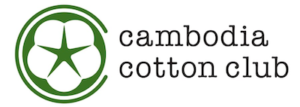Toxic chemical residues were also found in children's clothing from ultra-luxury brands.
・HERMES
・LOUIS VUITTON
・Dior
・GIORGIO・ARMANI
・DOLCE&GABBANA
・Marc Jacobs
・Trussardi
・VERSACE
It seems that because the price is high, it does not mean that the children's clothing is safe.
The residues were the same types of toxic chemicals reported in the previous section (1).
The test was conducted by an international environmental NGO, which selected 27 ultra-luxury brand store products for sale and reported that 16 of them were found to contain one or more nonylphenol ethoxylates (NPEs), phthalates, organofluorine compounds (PFCs), and antimony.
From my personal experience, I believe the following are the reasons why the same toxic chemicals were detected in the sample tests I reported in the previous section (1).
It was hard to believe at first, but both low-priced and luxury brand clothes are actually produced in almost the same factories. The same is true for spinning, dyeing, and weaving. As for sewing, if a factory has a certain level of skill, both low-priced and luxury brand clothes are sewn on the same production line in the same factory.
For example, the first three weeks of June are low-priced fashion. The fourth week is for luxury brands, and so on.
It was quite a surprise to me when I first became involved in this industry to learn that the production processes for luxury brands and low-priced brands, which differ by a factor of 10 or more in retail price, are the same. Until then, I had an image (illusion) that ultra-luxury brand clothes were made by hand, piece by piece, by craftsmen in a factory like a small workshop.
The actual textile industry uses huge machinery, and its scale is so huge that one can only imagine what it must be like to actually tour the inside of a factory. The machines themselves are large, but the production lines seem to stretch on and on for a long distance.
If you think about it, since they are made in the same factory, there is no reason to believe that there is any difference in dyeing techniques or sewing between low-priced and ultra-luxury fashions. The time and effort required to make products with differences using the same machines is much more costly. There is no way they would do that.
Since the residual substance in children's clothing is the same from low-cost fashion to high-end fashion, there must be some commonality in the products. I would like to explore what is even happening to children's clothing, focusing on the production sites in China.
( to be continued )
